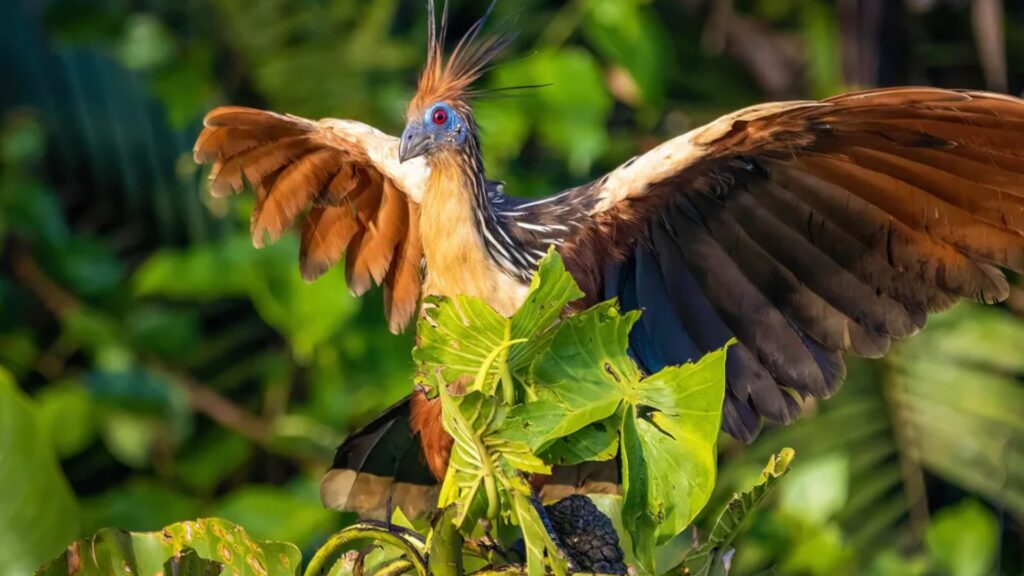
The hoatzin, scientifically known as Opisthocomus hoazin, is a unique bird native to the Amazon and Orinoco river basins. It’s commonly called the “stinkbird” or “reptile bird” and is known for its peculiar characteristics and behaviors.
A Unique Animal
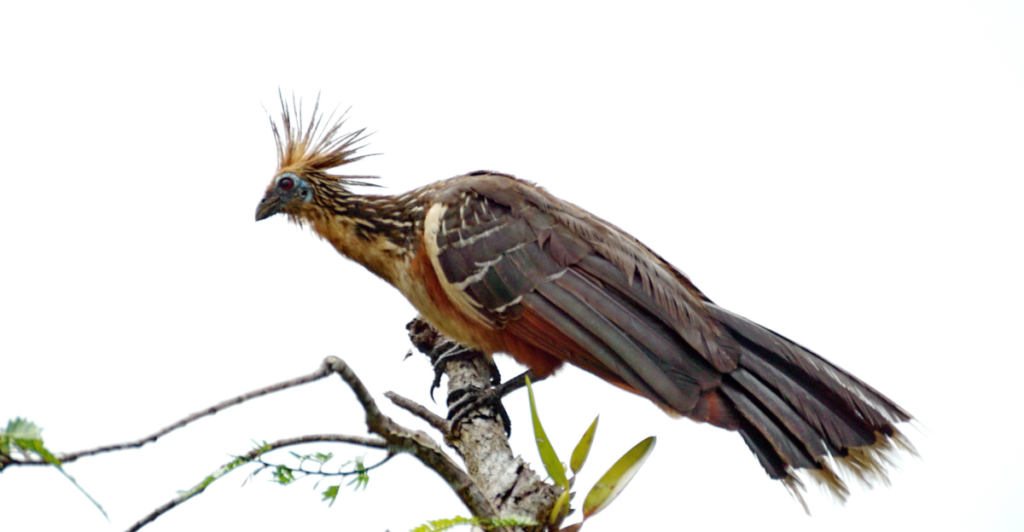
The hoatzin is a remarkable example of nature’s diversity and adaptability. Its unique features and behaviors make it an intriguing subject for study. As we continue to learn about this fascinating bird, it serves as a reminder of the importance of preserving its natural habitat for future generations.
Unique Digestive System
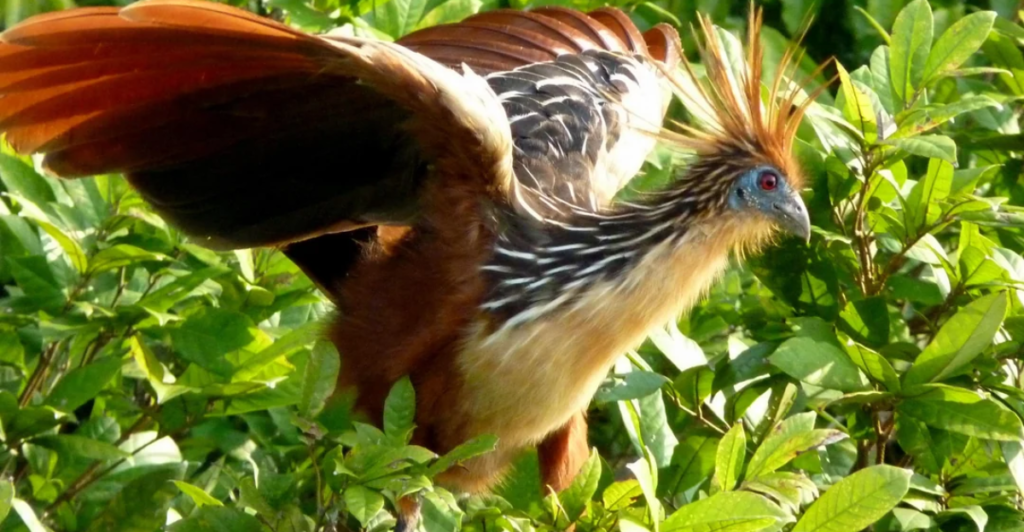
One of the most remarkable features of the hoatzin is its digestive system, which ferments vegetation like that of a cow. This adaptation allows it to consume a diet primarily made up of leaves, making it a folivore. The fermentation process produces a strong odor, contributing to its nickname as the stinkbird.
Clawed Chicks
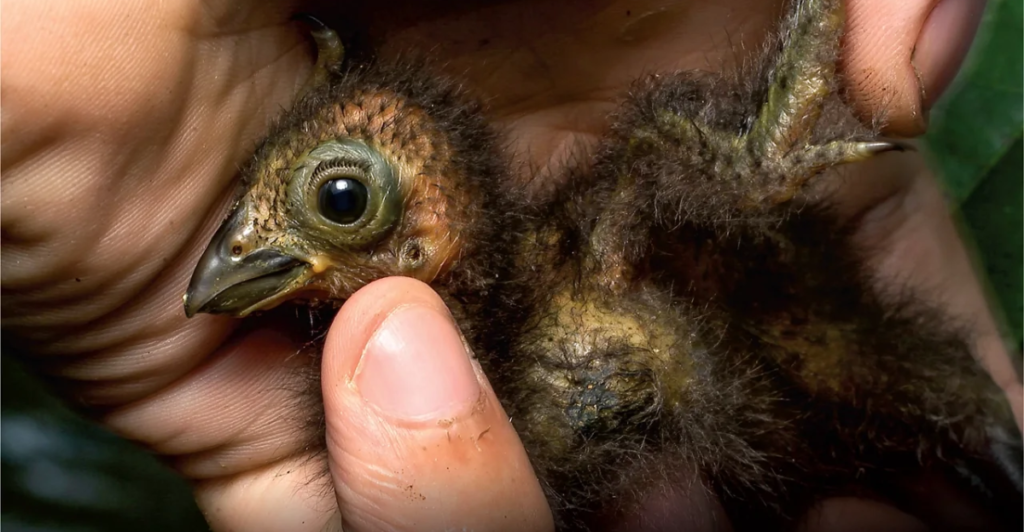
Young hoatzins are born with large claws on each wing, which help them climb through trees and navigate their environment. These claws are reminiscent of ancient birds and have led scientists to connect hoatzins with prehistoric avian species like Archaeopteryx.
Social Behavior

Hoatzins are social birds often found in groups ranging from 15 to 100 individuals. They communicate through various vocalizations, including hisses and grunts, which help maintain contact within their flock as they move through their swampy habitats.
Habitat Preferences
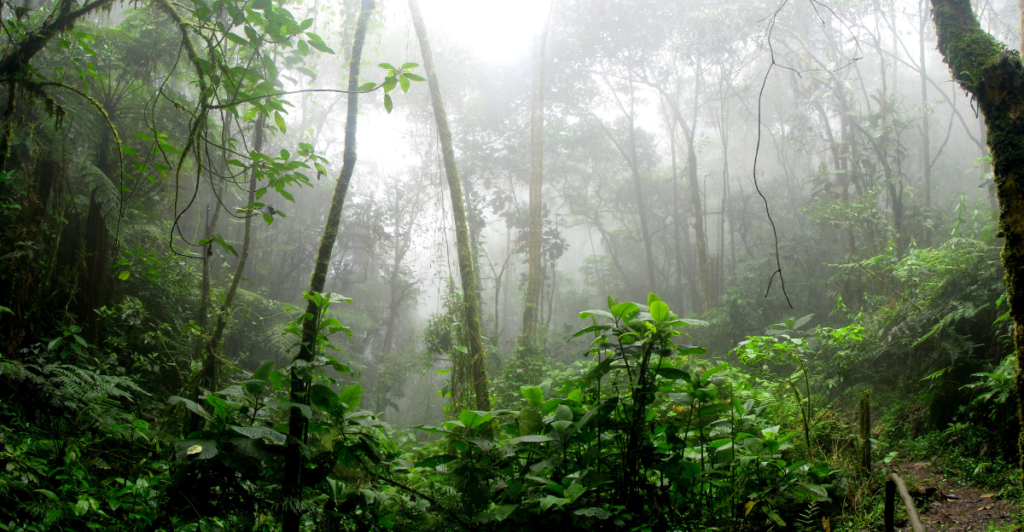
These birds thrive in humid environments such as swamps, riparian forests, and mangroves. Their habitat choice is crucial for their diet, as they primarily feed on leaves, flowers, and fruits found in these lush areas.
Physical Appearance
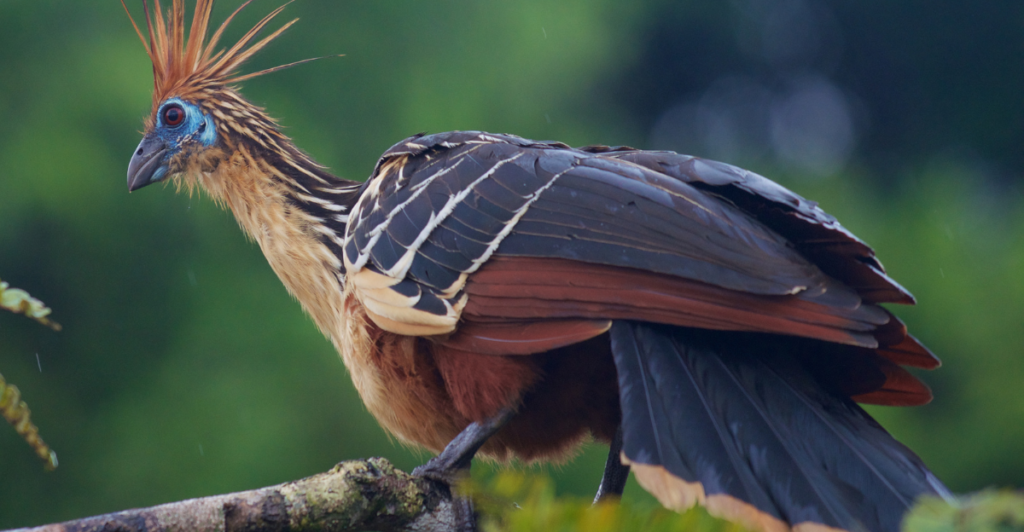
The hoatzin is about the size of a pheasant, measuring approximately 65 cm (26 inches) in length. It has a distinctive appearance with a blue face, red eyes, and a spiky orange crest atop its head. Its plumage is mostly brown with rufous-chestnut underparts visible when its wings are spread.
Flight Capabilities
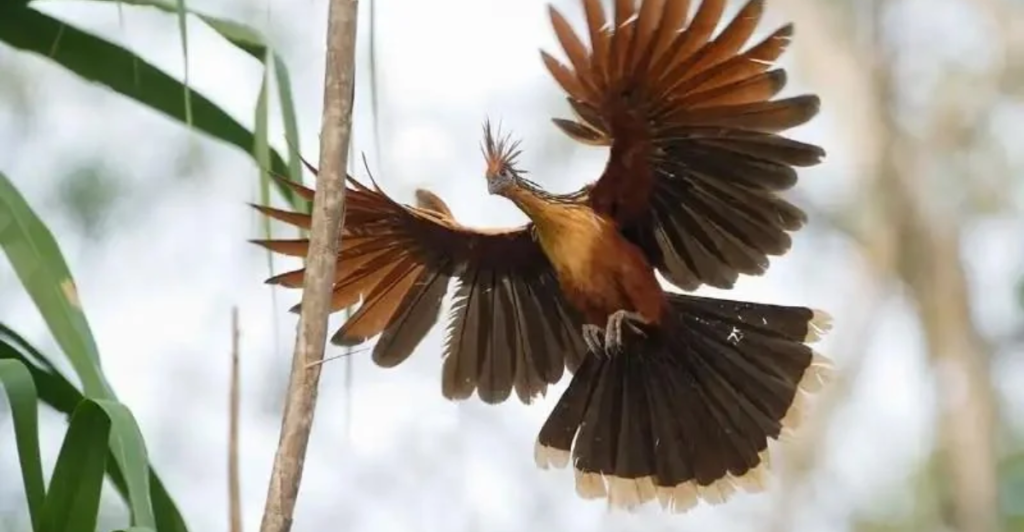
Despite being classified as a bird, hoatzins are not strong fliers. Their reduced sternum limits the development of flight muscles, making their flying ability clumsy and inefficient. They prefer to climb through trees rather than fly long distances.
Parental Care
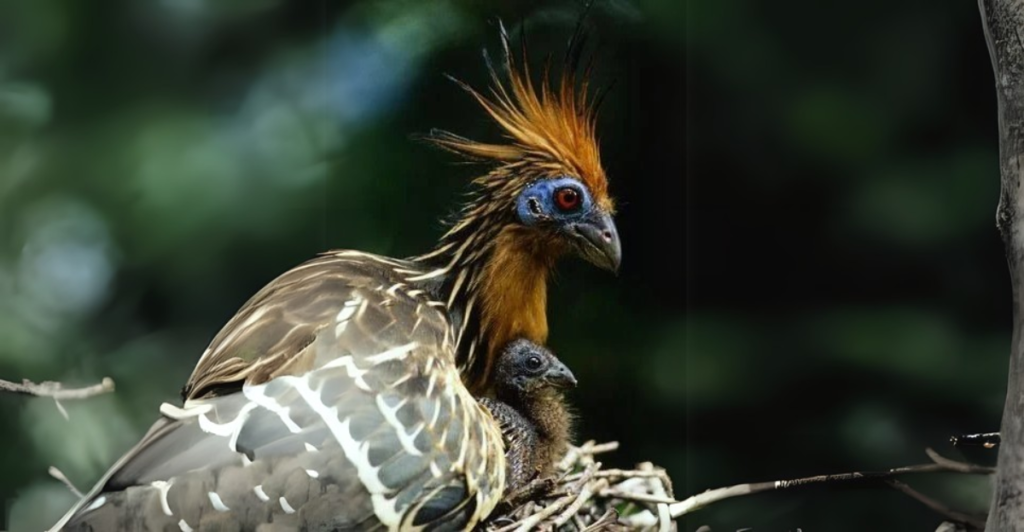
Both male and female hoatzins participate in raising their young. After laying eggs in nests built over water, they feed the chicks a regurgitated leaf paste from their crops. This cooperative parenting ensures the survival of their offspring in the wild.
Defense Mechanisms

When threatened by predators such as capuchin monkeys or tayras, young hoatzins can dive into the water to escape danger. They are excellent swimmers and can return to shore using their claws to climb back up to safety.
Evolutionary Significance
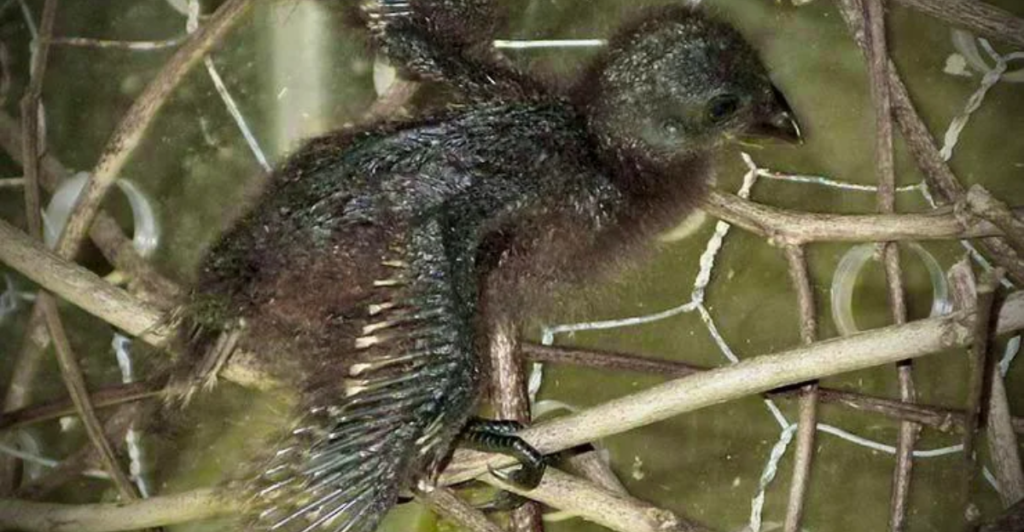
The hoatzin is considered a living fossil due to its primitive features that have remained unchanged for millions of years. Genetic studies suggest that it is the last surviving member of an ancient lineage that dates back to the time of dinosaurs.
Smell and Taste
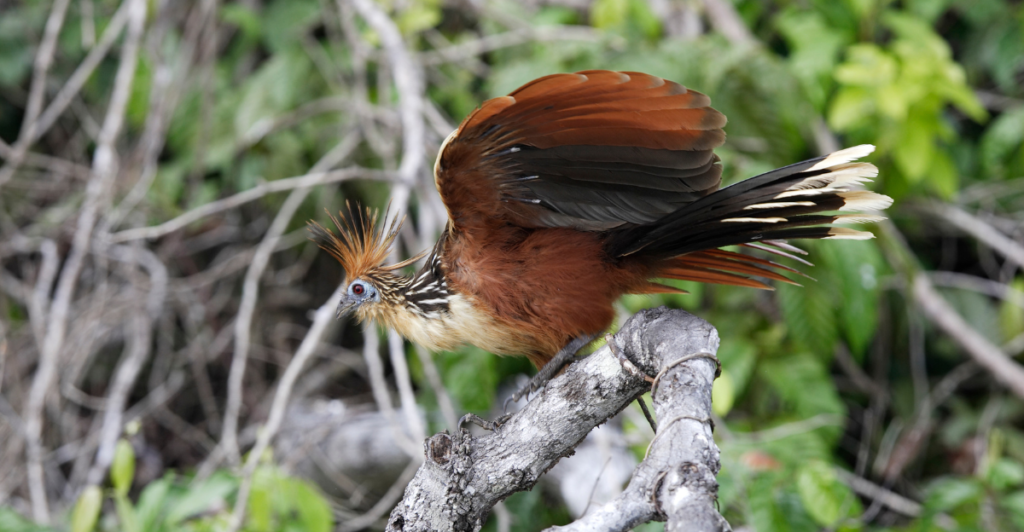
The fermentation process in their digestive system not only gives hoatzins a strong odor similar to cow manure but also makes them taste unpleasant. This may be one reason why they are less targeted by predators and hunters compared to other bird species.
Conservation Status
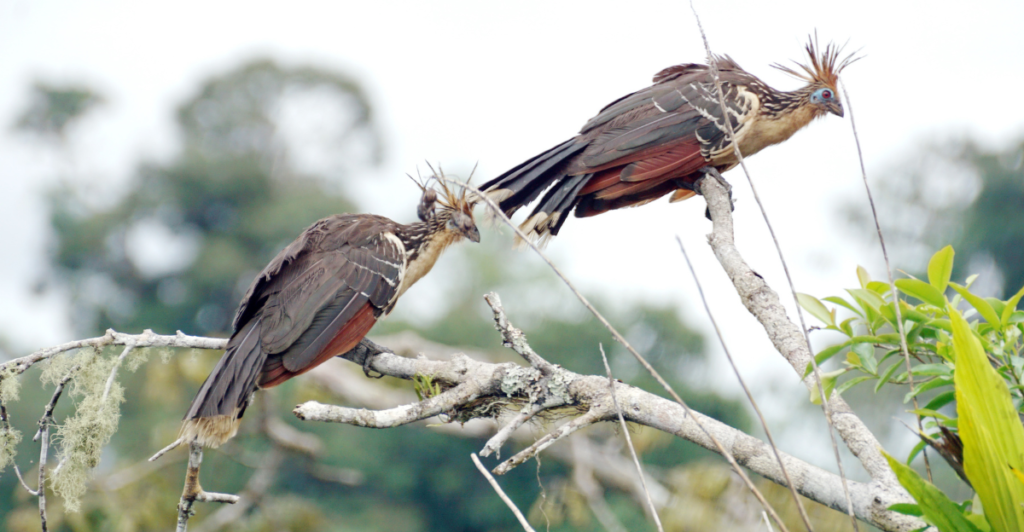
Currently, hoatzins are classified as “Least Concern” by the IUCN. Their populations remain stable due to their adaptability and the availability of suitable habitats within protected areas of the Amazon rainforest.
Discover more of our trending stories and follow us to keep them appearing in your feed
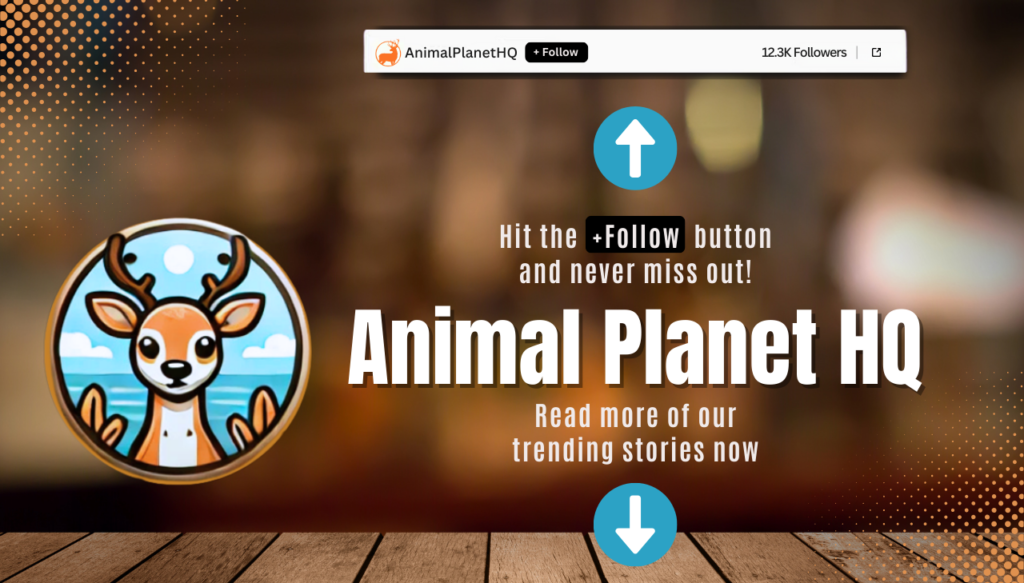
12 Bold Animals That Have No Fear of Predators – Nature’s Underrated Fighters
Top 10 Largest Domestic Cat Breeds by Weight
Colossal American Impact Crater Found—Three Times Bigger Than the Grand Canyon
8 Massive Ice Age Animals That Once Roamed North America
Stay connected with us for more stories like this! Follow us to get the latest updates or hit the Follow button at the top of this article, and let us know what you think by leaving your feedback below. We’d love to hear from you!







